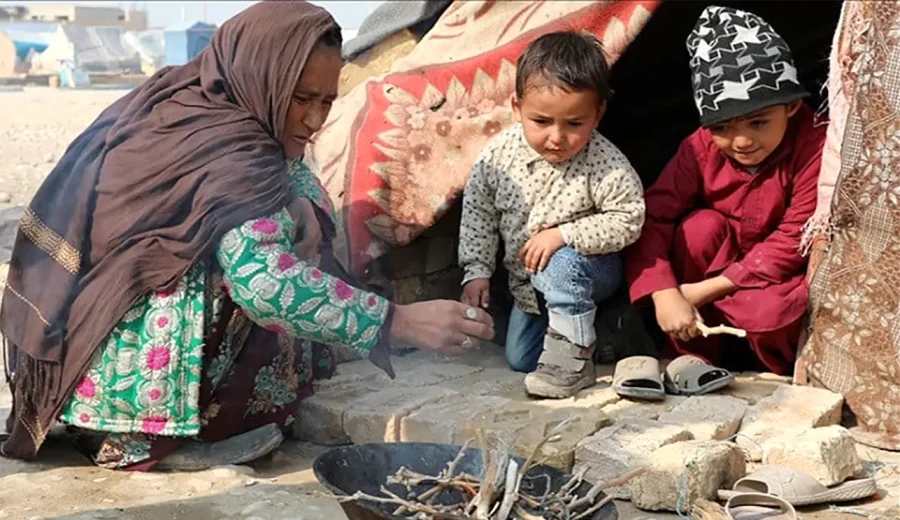Afghanistan is one of several countries around the world in the grip of a food crisis, where a mix of politics, economics and nature’s ravages are taking a heavy toll on vast sections of a vulnerable population.
In a country emerging from decades of war and turmoil, women and children are among those particularly impacted by biting food insecurity, according to the UN’s World Food Program (WFP).
“Some of the most affected by the hunger crisis at the moment are women and girls,” Philippe Kropf, WFP’s head of communications in Afghanistan, told Anadolu. Currently, a third of the Afghan population, or nearly 16 million people, are going hungry, and every province is at crisis levels of food insecurity, or higher, according to the UN agency.
“We have 15.8 million people in acute food insecurity, which includes 3.5 million people facing emergency levels of food insecurity,” Kropf said.
UN figures paint a grim picture for women and girls, with an estimated 1 million malnourished, pregnant and breastfeeding women in Afghanistan in 2023.
Around 2 million girls and boys under the age of 5 were facing moderate acute malnutrition, and nearly 860,000 girls and boys under 5 had severe acute malnutrition.
“Severe acute malnutrition is one of the worst cases, where children do, unfortunately, die regularly,” said Kropf
One stark difference when comparing Afghanistan to other countries grappling with food crises is the level of availability.
In Afghanistan, according to the WFP, food is available in most parts of the country, even in the smaller remote districts.
The challenge is that families, including, and in most cases, women and girls, cannot access it because they do not have the money to buy it.
“Afghanistan is a crisis where the most vulnerable women and children cannot access the food that is on the market,” Kropf explained.
Curbs imposed on women’s employment have severely impacted households where women are the main providers. Many of these are women and widows who are currently not able to go out to work, he said.
“They are not salaried anymore. They cannot find work outside of their homes and it is increasingly difficult for them to buy the food, to buy the basic needs,” said Kropf.
More children are being admitted to hospitals and clinics for malnutrition, with beds fully occupied in some areas, he added.
He cited testimonies of women who have been deprived of the chance to earn an income, or cases where their husbands have moved to neighbouring countries for work but are unable to send money to their families. “Mothers here are relying a lot on borrowing food and money, both from shopkeepers and also from relatives,” said the WFP official.
“They are at the brink and they have very few opportunities left to look after themselves and their children.—Anadolu Agency










